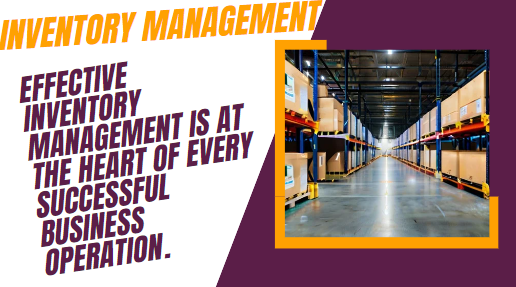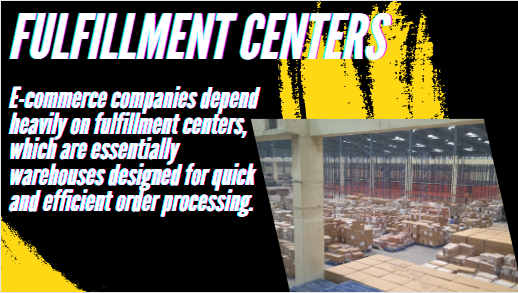- Introduction to need for warehouses:
- Inventory management in warehouses
- Efficient delivery
- Seasonal and cyclical demand
- Risk mitigation
- E-commerce growth
- Just-in-Time Inventory
- Economic growth and job creation
- Sustainability and environmental impact
- Globalization and trade
- Data and Technology Integration
- Omni channel retailing
- Market competition
- Conclusion on need for warehouses:
- Frequently Asked Questions
- Why are warehouses important?
- What are the benefits of using warehouses?
- How do warehouses help in logistics?
- What kind of warehouses are there?
- How do businesses decide warehouse location?
- Do businesses of all sizes need warehouses?
- Which technologies are transforming warehouse operations?
- Are there any alternatives to owning or leasing warehouses?
Introduction to need for warehouses:
Warehouses are the foundation of supply chains. In today’s rapidly developing business landscape the need for warehouses has become more essential than ever. Warehouses acts as a vital link in the journey of products from manufacturers to consumers. These huge storage facilities play a major role in managing inventory, simplifying efficient delivery, and ensuring customer satisfaction. This article highlights the complex reasons why warehouses are unavoidable in the modern world, and explores their impact on businesses, economy, and consumers.

Inventory management in warehouses
Effective inventory management is at the heart of every successful warehouse operation. Warehouses serve as central hubs for storing and managing inventory. They ensure that products are readily available as per requirement. Without adequate storage, businesses will struggle to keep track of their stock levels, leading to overstocking or stockouts, both of which can have harmful effects.
Preventing Overstocking:
When a business holds excessive inventory, causing valuable resources to accumulate in unsold products. Warehouses enable businesses to stock goods in an organized manner, helping them maintain a clear view of their inventory levels. This, in turn, prevents the costly mistake of overstocking.
Avoiding Stockouts:
Stockouts can lead to decreased sales and dissatisfied customers. Warehouses act as a buffer, allowing businesses to store surplus inventory that can be quickly deployed to meet sudden increases in demand. This ensures that products are available to customers when they need them and increasing customer satisfaction and brand reputation.
Efficient delivery
Warehouses help streamline the distribution process. They provide a central location where products can be stored, sorted, and shipped to their final destinations. This centralization provides several benefits:
Regional accessibility:
Warehouses are strategically located near transportation hubs and population centers, ensuring that products can be efficiently distributed to different areas. This reduces transportation costs and shortens delivery time.
Cross-docking:
Some warehouses use cross-docking technology, where goods are unloaded from incoming trucks and loaded onto outbound vehicles with minimal storage time. This speeds up the delivery process, reducing handling and storage costs.
Sorting and consolidation:
Warehouses often serve as sorting and consolidation points, allowing multiple products to be combined into a single shipment. This optimizes transportation efficiency and reduces the environmental impact associated with transportation.

Seasonal and cyclical demand
Many industries experience seasonal or cyclical fluctuations in demand Eg: Apparels. Warehouses are indispensable in these situations, as they provide the infrastructure needed to handle varying inventory levels throughout the year.
Seasonal storage:
For businesses dealing with seasonal products such as winter clothing, swimwear, or holiday decorations, warehouses provide space to store these items during the off-season. This prevents retailers from needing to maintain additional storage space on site.
Efficient Inventory Turnover:
Warehouses enable businesses to plan and prepare for peak demand periods by storing inventory in advance. This helps ensure efficient inventory turnover and capitalize on sales opportunities when demand increases.
Risk mitigation
Risk management is an integral part of business operations, and warehouses play a vital role in justifying various risks. Here are some of the risks that warehouses help deal with:
Supply chain disruptions:
Natural disasters, strikes, and geopolitical events can disrupt supply chains. Warehouses provide a buffer for businesses to absorb these shocks, ensuring that the flow of goods remains uninterrupted.
Quality Control:
Warehouses allow businesses to inspect, classify, and ensure quality of products before they reach customers. This helps to identify and resolve quality issues, reducing the risk of product recalls and related costs.
Inventory Security:
Warehouses provide a secure environment to store products, protecting them from theft, damage, and environmental factors. This reduces the risk of loss and related insurance claims.

E-commerce growth
With the rise of e-commerce, the need for warehouses has increased significantly. Online retailers have changed the way consumers shop, placing greater demands on supply chain infrastructure.
Fulfillment Centers:
E-commerce companies depend heavily on fulfillment centers, which are essentially warehouses designed for quick and efficient order processing. These centers play a major role in ensuring quick delivery to customers, which is a major competitive advantage in the online retail industry.
Last-mile delivery:
Warehouses located near urban centers are essential to facilitate last-mile delivery, which is the final stage of a product’s journey to the customer. This is an important aspect of e-commerce, as it directly impacts customer satisfaction and brand loyalty.

Just-in-Time Inventory
Just-in-time (JIT) inventory management approach has gained popularity due to its efficiency in reducing carrying costs and waste. However, JIT depends on the presence of warehouses to function effectively.
Supplier Coordination:
JIT inventory systems require close coordination with suppliers. Warehouses act as intermediate points where products can be held until they are needed by manufacturers. This reduces the need for manufacturers to store large quantities of raw materials on-site.
Buffer Stock:
While JIT aims to reduce inventory, it does not eliminate it. Warehouses provide necessary buffer stock to accommodate minor differences in demand and supply.
Economic growth and job creation
Warehouses are not only important for individual businesses but also have a significant impact on the broader economy. They contribute to economic growth and job creation in several ways:
Employment Opportunities:
Warehouses employ a large number of people, from forklift operators to logistics specialists and managers. This job creation is essential to local economies and helps reduce unemployment rates.
Infrastructure investment:
Building and maintaining warehouses requires substantial investment, which encourages economic activity in the construction and real estate sectors.
Trade and Export:
Warehouses facilitate the movement of goods domestically and internationally. They are important for improving trade and exports, a country’s economic performance, and global competitiveness.

Sustainability and environmental impact
Considering environmental sustainability, warehouses play an important role in making supply chains more eco-friendly. By optimizing storage, transportation, and packaging, warehouses can contribute to sustainability in the following ways:
Efficient transportation:
Warehouses enable businesses to consolidate shipments, reducing the number of vehicles on the road. However, this reduces fuel consumption, and emissions and reduces traffic congestion.
Adoption of renewable energy:
Warehouses are increasingly adopting renewable energy sources such as solar panels and wind turbines to power their operations. This reduces their carbon footprint and contributes to the transition to clean energy.
Packaging Optimization:
Warehouses are ideal places to optimize product packaging, minimize material use, and reduce waste. This supports sustainability goals by reducing the environmental impact of packaging.
Globalization and trade
Globalization has expanded the reach of businesses, making international trade an important part of the modern economy. Warehouses are essential for managing the logistics of global supply chains.
Import and Export:
Warehouses near ports and customs facilities are important for handling imported and exported goods. They facilitate the timely processing of goods through customs and enable international trade to run smoothly.
Regional distribution centers:
Multinational companies often set up regional distribution centers to serve multiple countries. These centers help streamline the distribution of products across borders and ensure efficient delivery to customers in different regions.

Data and Technology Integration
The digital age has helped in a new era of data and technology integration within warehouses. These advancements have transformed warehouse management and made them even more indispensable.
Inventory Tracking:
Modern warehouses use technology like barcode scanners, RFID tags, and inventory management software to accurately track products. This real-time tracking increases inventory visibility and reduces the risk of errors.
Automated systems:
Robotics and automation are becoming increasingly common in warehouses, improving efficiency and reducing labor costs. Automated systems can handle tasks like order picking, packing, and sorting with accuracy and speed.
Data Analytics:
Warehouses generate large amounts of data that can be examined to optimize operations. Prior analytics helps businesses forecast demand, plan inventory levels, and improve overall supply chain efficiency.
Omni channel retailing
The concept of Omni channel retailing, which integrates online and offline sales channels, depends on warehouses for success. In this model, customers expect a seamless shopping experience, no matter how they engage with a brand.
Click-and-collect (Pickup Delivery Point):
Warehouses support click-and-collect services, allowing customers to order online and pick up their purchases from physical stores. This integration requires efficient inventory management and coordination between online and offline sales channels.
Inventory availability:
To provide customers with real-time information about product availability across all channels, warehouses should be synchronized with point-of-sale systems used in physical stores and online platforms.
Market competition
Efficiency and cost-effectiveness are supreme in a highly competitive business environment. Warehouses play a major role in promoting businesses gain a competitive edge.
Cost Reduction:
Warehouses can reduce operating costs by optimizing inventory storage, transportation, and labor. This cost reduction enables businesses to offer competitive pricing to customers.
Speed to market:
Purposefully located warehouses can significantly reduce the time it takes for products to reach the market. Quick delivery time is a competitive advantage in industries where time-to-market is critical.
Customer Satisfaction:
Timely and accurate order fulfillment contributes to customer satisfaction and brand loyalty, which can be a significant differentiator in competitive markets.
Conclusion on need for warehouses:
The need for warehouses is as important today as it has ever been. Above all warehouses are the backbone of modern supply chains, serving many purposes beyond mere storage. They contribute to efficient inventory management, enable seamless distribution, reduce risks, and support economic growth. As the business landscape continues to progress, the role of warehouses will become more indispensable in adapting to new technologies, environmental considerations, and consumer expectations. Without these features, businesses will struggle to meet the demands of a dynamic and interconnected world.
Frequently Asked Questions
Why are warehouses important?
Warehouses play a vital role in the supply chain by providing storage space for goods before they are delivered to customers. They help businesses manage inventory efficiently, fulfill orders promptly, and maintain a steady flow of products.
What are the benefits of using warehouses?
Warehouses offer many benefits, including:
Inventory management: Warehouses provide a centralized location to store and organize inventory, making it easier to track and manage stock levels.
Faster order fulfillment: Having stock readily available in warehouses helps businesses fulfill customer orders quickly, leading to higher customer satisfaction.
Cost Savings: Efficient warehouse operations can help reduce costs associated with inventory management, transportation, and storage.
Flexibility: Warehouses provide businesses with the flexibility to scale their operations up or down based on fluctuations in demand.
How do warehouses help in logistics?
Warehouses are an integral part of logistics operations as they serve as centers for receiving, storing and distributing goods. They facilitate the movement of products along the supply chain by providing a centralized location for inventory management and order fulfillment.
What kind of warehouses are there?
There are different types of warehouses, including:
Distribution warehouses: These warehouses are strategically located to facilitate delivery of goods to customers or retail outlets.
Fulfillment Centers: Fulfillment centers often specialize in processing and shipping online orders for e-commerce businesses.
Cold Storage Warehouses: These warehouses are designed to store perishable goods such as food and pharmaceuticals at controlled temperatures.
Cross-docking facilities: Cross-docking warehouses enable goods to be transferred directly from inbound to outbound trucks, reducing storage time.
How do businesses decide warehouse location?
Businesses consider many factors when choosing warehouse locations, including proximity to suppliers and customers, transportation infrastructure, labor availability, land and construction costs, and regulatory considerations.
Do businesses of all sizes need warehouses?
While small businesses may initially rely on alternative storage solutions such as self-storage units or third-party logistics providers, as they grow, the need for dedicated warehouse space often becomes essential for efficient inventory management and order fulfillment.
Which technologies are transforming warehouse operations?
Warehouse operations are being transformed by technologies such as automation, robotics, artificial intelligence and warehouse management systems (WMS). These technologies improve efficiency, accuracy and productivity in tasks such as inventory tracking, order picking and transportation management.
Are there any alternatives to owning or leasing warehouses?
Yes, businesses can opt for options such as outsourcing warehousing and fulfillment services to third-party logistics (3PL) providers or using shared warehousing facilities. These options provide flexibility and cost savings, especially for small businesses or businesses with seasonal fluctuations in demand.
